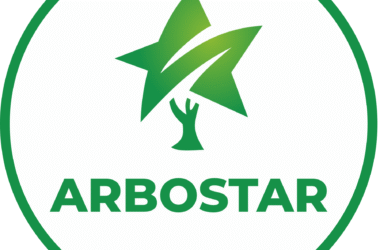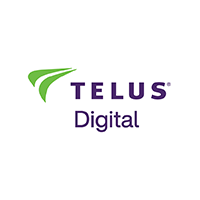Welcome to the final word showdown between Miro and Mural! In the event you’re scratching your head, questioning which software is the very best match in your group, you’re in the correct place. We’re diving deep into these two titans of the digital collaboration world. We’ll break down their options, professionals, and cons, and provide the lowdown on which one may simply be your new greatest buddy.
Think about Miro and Mural as two superheroes. Miro, the versatile virtuoso, and Mural, the inventive mastermind. Each have their strengths, and we’re right here that can assist you determine which one fits your wants.
Why must you care? Properly, within the age of distant work, having the correct collaboration software could make or break your group’s productiveness and creativity. Whether or not you’re brainstorming, planning tasks, or internet hosting workshops, Miro and Mural supply distinctive options that may take your group to the subsequent stage.
We’ll kick issues off with an in-depth have a look at Miro, exploring its strengths and areas the place it would fall brief. Then, we’ll swap gears to Mural, analyzing what it brings to the desk and the place it would want a bit of polish.
However that’s not all. We’ll additionally sort out the million-dollar query: how do you select between Miro and Mural? We’ll offer you actionable recommendation and tricks to make that call a breeze.
So, seize a espresso, sit again, and let’s dive into the world of Miro and Mural. It’s time to search out out which one will reign supreme in your collaborative toolkit!
Miro: The Versatile Virtuoso
Execs of Miro
Person-Pleasant Interface:
- Intuitive and straightforward to navigate.
- Drag-and-drop performance for fast setup.
- Minimal studying curve, good for inexperienced persons.
- Clear design that reduces muddle and distraction.
Intensive Template Library:
- A whole bunch of templates for varied use circumstances.
- Customizable templates to go well with particular wants.
- Templates for brainstorming, planning, and extra.
- Saves time and boosts productiveness.
Integration Capabilities:
- Seamlessly integrates with fashionable instruments like Slack, Jira, and Google Drive.
- Enhances workflow by connecting with present software program.
- Automates duties and reduces handbook effort.
- Improves group collaboration and communication.
Actual-Time Collaboration:
- A number of customers can work on the identical board concurrently.
- Actual-time updates hold everybody on the identical web page.
- Commenting and tagging options for simple suggestions.
- Excellent for distant groups and hybrid work environments.
Versatile Use Instances:
- Appropriate for brainstorming, mission administration, and design considering.
- Adaptable to numerous industries and group sizes.
- Utilized by educators, entrepreneurs, designers, and extra.
- Helps inventive and analytical duties alike.
Cons of Miro
Subscription Prices:
- Could be dear for small groups or startups.
- The free plan has restricted options.
- Greater-tier plans are required for superior functionalities.
- Prices can add up with extra customers.
Steep Studying Curve for Superior Options:
- Fundamental options are simple to understand, however superior ones take time.
- Requires coaching to completely leverage all functionalities.
- Could be overwhelming for brand spanking new customers.
- Documentation and tutorials are useful however time-consuming.
Efficiency Points with Massive Boards:
- Can decelerate with complicated or extremely detailed boards.
- Efficiency could undergo with many customers collaborating concurrently.
- Requires web connection for optimum use.
- Not excellent for groups working with very giant datasets.
Restricted Offline Entry:
- Primarily a cloud-based software.
- Restricted performance when offline.
- Requires web entry for many options.
- Generally is a downside in areas with poor connectivity.
Mural: The Inventive Mastermind
Execs of Mural
Deal with Creativity:
- Designed for brainstorming and inventive processes.
- Encourages out-of-the-box considering.
- Options like sticky notes, shapes, and pictures to visualise concepts.
- Excellent for inventive groups and design considering workshops.
Versatile Canvas:
- Infinite canvas permits for expansive brainstorming.
- Manage concepts spatially for higher visualization.
- Straightforward to rearrange and group ideas.
- Facilitates non-linear considering and exploration.
Facilitation Instruments:
- Constructed-in instruments for working workshops and conferences.
- Timer, voting, and agenda options to handle classes.
- Ensures structured and productive conferences.
- Nice for facilitators and group leads.
Collaborative Options:
- Actual-time collaboration with on the spot updates.
- Commenting, @mentions, and chat for seamless communication.
- Shared workspace for distributed groups.
- Encourages participation and suggestions from all group members.
Integration Choices:
- Connects with fashionable instruments like Microsoft Groups, Zoom, and Dropbox.
- Enhances workflow and reduces tool-switching.
- Automates information syncing and sharing.
- Streamlines collaborative efforts throughout platforms.
Cons of Mural
Studying Curve:
- The interface will be overwhelming at first.
- Requires time to grasp all options.
- New customers might have coaching and apply.
- Intensive documentation is on the market however will be daunting.
Pricey for Small Groups:
- Subscription plans will be costly.
- Restricted options on the free plan.
- Prices enhance with extra customers.
- Might not be budget-friendly for startups.
Efficiency with Massive Boards:
- Can lag with very detailed or complicated boards.
- Efficiency could drop with many collaborators.
- Wants a steady web connection.
- Not excellent for low-bandwidth environments.
Restricted Offline Capabilities:
- Principally reliant on cloud entry.
- Restricted options when offline.
- Requires web for full performance.
- This could be a problem in areas with connectivity points.
Superior Options and Customization: A Deeper Dive
In relation to superior options and customization, each Miro and Mural supply a spread of instruments that may considerably improve your group’s productiveness and creativity. Let’s delve deeper into what every platform brings to the desk by way of superior functionalities and customization choices.
Miro: Superior Options and Customization
Miro shines in relation to providing a broad spectrum of superior options and customization choices. Right here’s a more in-depth look:
Customized Templates and Frameworks
Miro gives the power to create customized templates and frameworks tailor-made to your group’s particular workflows. This function is especially useful for organizations which have distinctive processes or repeat related duties commonly. By creating and saving customized templates, groups can streamline their operations and guarantee consistency throughout tasks.
Integration With Different Instruments
Miro integrates seamlessly with quite a lot of third-party purposes akin to Slack, Jira, Google Drive, Trello, and extra. This integration functionality permits groups to embed paperwork, monitor mission progress, and talk with out leaving the Miro atmosphere. It ensures that each one vital instruments are interconnected, making a extra cohesive and environment friendly workflow.
API and SDK for Builders
For tech-savvy groups, Miro gives API and SDK choices. These instruments permit builders to construct customized apps and integrations tailor-made to their particular wants. Whether or not it’s automating repetitive duties or integrating with in-house software program, Miro’s developer instruments present the pliability to increase its performance far past out-of-the-box capabilities.
Superior Collaboration Instruments
Past primary real-time collaboration, Miro contains options like voting, dwell reactions, and breakout rooms. Voting instruments will help groups make selections shortly, whereas dwell reactions hold the classes partaking and interactive. Breakout rooms are good for splitting bigger teams into smaller groups to sort out particular duties earlier than reconvening to share insights.
Sturdy Safety Options
Miro takes safety severely, providing enterprise-grade safety features akin to Single Signal-On (SSO), area management, and information encryption. These options are essential for organizations coping with delicate data, guaranteeing that each one information is protected against unauthorized entry.
Customizable Workspaces
Miro permits groups to customise their workspaces to suit their branding and workflow wants. You possibly can modify the looks of boards, create customized dashboards, and manage tasks in a approach that is smart in your group. This customization helps in making the software really feel extra built-in into the corporate’s ecosystem.
Mural: Superior Options and Customization
Mural additionally excels in offering superior options, significantly for groups centered on creativity and innovation. Right here’s what Mural brings to the desk:
Superior Facilitation Instruments
Mural stands out with its facilitation instruments designed for interactive classes. These embrace timers, voting programs, and the power to create personal mode classes the place individuals can contribute concepts with out seeing others’ enter initially. These options are significantly helpful for working workshops, design sprints, and collaborative brainstorming classes.
Template Library and Customization
Mural gives a complete library of templates that may be personalized to go well with varied group wants. From buyer journey maps to thoughts maps and SWOT evaluation, these templates present an incredible start line for a lot of totally different actions. Groups also can create and save their customized templates, which helps in sustaining a constant method throughout a number of tasks.
Integration Capabilities
Like Miro, Mural integrates with fashionable instruments akin to Microsoft Groups, Slack, and Google Drive. These integrations facilitate a smoother workflow by permitting groups to entry paperwork, share updates, and talk inside a single platform. Mural’s integration with video conferencing instruments additionally enhances the distant collaboration expertise, making it simple to run digital workshops and conferences.
Knowledge Import and Export
Mural permits customers to import information from varied sources, together with spreadsheets and textual content paperwork, immediately into the workspace. This function is useful for groups that want to visualise complicated information shortly. Moreover, customers can export their Mural boards in a number of codecs, making it simple to share insights and outcomes with stakeholders.
Customized Icons and Visuals
Mural gives a wealthy library of icons, photos, and shapes that groups can use to create visually partaking boards. The flexibility to add customized visuals additional enhances the inventive potential, permitting groups to personalize their boards with branded graphics or particular imagery related to their tasks.
Superior Safety Choices
Safety is a key concern for Mural as effectively, with options akin to SSO, encryption, and compliance with trade requirements like GDPR. These safety measures be certain that information stays protected, making Mural a dependable choice for groups dealing with delicate data.
Workspace Group and Administration
Mural gives strong instruments for organizing and managing workspaces. Groups can create separate rooms for various tasks, assign roles and permissions, and arrange dashboards to maintain monitor of progress. This stage of group is especially helpful for bigger groups or firms managing a number of tasks concurrently.
Selecting Between Miro and Mural
Deciding between Miro and Mural can really feel like selecting between pizza and burgers – each are nice, however which one fits your present craving? Right here’s a breakdown that can assist you make the decision.
Use Case and Group Wants
Miro:
- Finest for versatile use circumstances like mission administration, brainstorming, and strategic planning.
- Appropriate for a variety of industries.
- Nice for groups that want integration with different instruments.
- Excellent if you’d like an all-in-one collaboration platform.
Mural:
- Excellent for inventive processes and design considering.
- Wonderful for groups centered on brainstorming and innovation.
- Excellent for workshops and facilitated classes.
- Nice for groups that prioritize visible and spatial group of concepts.
Finances Issues
Miro:
- Free plan out there with restricted options.
- Paid plans will be dear however supply intensive functionalities.
- Contemplate price per consumer and extra options required.
- Good funding for groups needing strong collaboration instruments.
Mural:
- Additionally gives a free plan with restricted options.
- Paid plans will be expensive, particularly for small groups.
- Consider primarily based on group measurement and have wants.
- Funding is worth it for groups centered on creativity and workshops.
Studying Curve
Miro:
- Person-friendly for primary options.
- Superior options require coaching.
- Intensive tutorials and documentation can be found.
- Appropriate for groups prepared to take a position time in studying.
Mural:
- Could be overwhelming initially.
- Requires time to get used to all options.
- Complete guides and help can be found.
- Finest for groups with a devoted facilitator or coach.
Integration and Workflow
Miro:
- Wonderful integration capabilities.
- Connects with a variety of instruments like Slack, Jira, and Google Drive.
- Enhances present workflows.
- Excellent for groups utilizing a number of collaboration instruments.
Mural:
- Good integration choices.
- Works effectively with Microsoft Groups, Zoom, and Dropbox.
- Streamlines collaborative efforts.
- Appropriate for groups needing seamless software integration.
Actual-Time Collaboration
Miro:
- Sturdy real-time collaboration options.
- A number of customers can work concurrently.
- Instantaneous updates hold everybody aligned.
- Excellent for distant and hybrid groups.
Mural:
- Wonderful for real-time brainstorming.
- Instantaneous updates and seamless communication.
- Nice for distributed groups.
- Encourages energetic participation from all members.
FAQs
1. Can Miro and Mural be used collectively?
Completely! Whereas each instruments have overlapping options, they will complement one another properly. For instance, you may use Mural for brainstorming classes and Miro for mission administration and detailed planning. By leveraging the strengths of each platforms, you’ll be able to create a complete workflow that covers all of your bases.
2. Is there a steep studying curve for Miro and Mural?
Each Miro and Mural have user-friendly interfaces, however the studying curve can differ relying in your use case. Miro is mostly simpler to select up for primary duties, however its superior options could require some coaching. Mural, however, could be a bit overwhelming at first, particularly for brand spanking new customers, nevertheless it gives intensive documentation and help that can assist you stand up to hurry.
3. How do the pricing plans examine?
Each Miro and Mural supply free plans with restricted options, that are nice for small groups or these simply getting began. Nevertheless, as your wants develop, you might discover the paid plans to be extra appropriate. Miro’s paid plans begin at a lower cost level however can get costly as you add extra customers and require superior options. Mural’s pricing also can add up, particularly for bigger groups, nevertheless it gives strong instruments for inventive collaboration and workshops.
4. Which software is healthier for distant groups?
Each Miro and Mural excel in supporting distant groups with real-time collaboration options. Miro is especially robust in mission administration and integrates effectively with different instruments, making it a strong alternative for distant groups that want a flexible resolution. Mural, with its emphasis on creativity and brainstorming, is great for groups that conduct quite a lot of workshops and wish a dynamic area to generate and manage concepts.
5. Can these instruments help large-scale tasks?
Sure, each Miro and Mural can deal with large-scale tasks, however there are some caveats. Miro tends to carry out higher with giant tasks as a consequence of its strong function set and integration capabilities. Nevertheless, efficiency can undergo with very complicated or closely detailed boards. The mural is unbelievable for the ideation section and organizing ideas however could expertise lag with extremely detailed boards and plenty of simultaneous collaborators. For each instruments, having a steady web connection is essential.
6. How do Miro and Mural deal with suggestions and revisions?
Miro gives commenting and tagging options, permitting for model historical past monitoring. It permits simple suggestions integration, making it nice for groups needing detailed revision historical past. The mural gives commenting and real-time collaboration. Suggestions will be organized utilizing sticky notes and shapes. It’s much less centered on model historical past and extra on visible suggestions, making it excellent for groups that want fast, visible suggestions loops.
7. Are Miro and Mural safe for confidential tasks?
Miro gives enterprise-grade safety and compliance with GDPR, SOC 2, and different requirements. It gives superior safety features for paid plans, making it appropriate for groups dealing with delicate data. Mural additionally ensures high-security requirements and is GDPR compliant with strong safety measures. It gives safe collaboration areas, excellent for inventive tasks that require confidentiality.
Last Ideas
Selecting between Miro and Mural in the end comes right down to your particular wants, group dynamics, and the form of work you do. Miro shines as a flexible, all-in-one collaboration software that fits a variety of duties, from mission administration to strategic planning. Its intensive integration capabilities make it a robust addition to any group’s toolkit.
Alternatively, Mural is your go-to if creativity and brainstorming are on the coronary heart of your workflow. Its design encourages visible considering and facilitates dynamic, partaking workshops. Whereas it could have a steeper studying curve, the payoff is a software that actually enhances inventive collaboration.
Ultimately, each Miro and Mural are distinctive instruments in their very own proper. By understanding their strengths and weaknesses, you may make an knowledgeable choice that reinforces your group’s productiveness and fosters collaboration, regardless of the place you’re. Whether or not you’re sketching out the subsequent huge thought or plotting the trail to mission completion, one among these instruments will certainly be your trusty sidekick.
Hello, I’m Zoë, the founding father of Distant Work Sensible. For the previous decade, I’ve been immersed on the planet of distant work, collaborating with companies worldwide and main giant distant groups. Alongside my ventures in distant work, I additionally established Wild Lotus, a digital content material company.
Source link





![[Hiring] Business intelligence developer @Fulcrum](https://remoteworkwizard.com/wp-content/uploads/2025/03/Hiring-Business-intelligence-developer-@Fulcrum.jpeg)

This should be a required read.
You made it so easy to understand.
This content is incredibly informative.
Very practical and actionable tips.
You’ve got a new fan here!